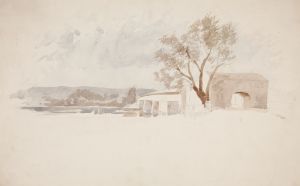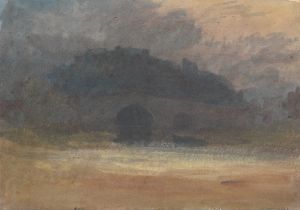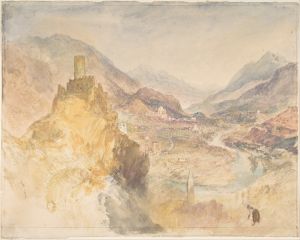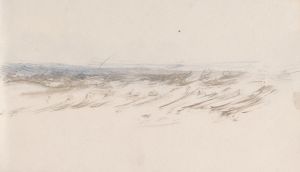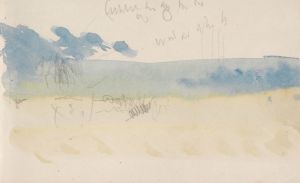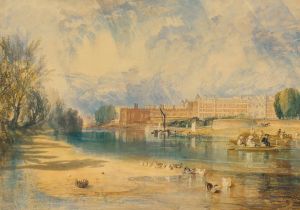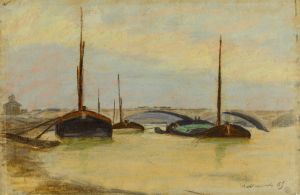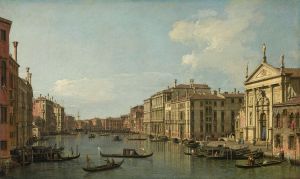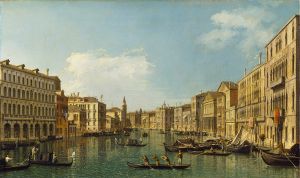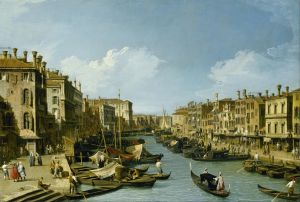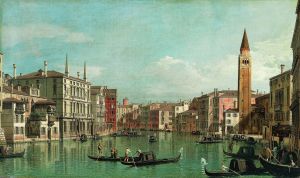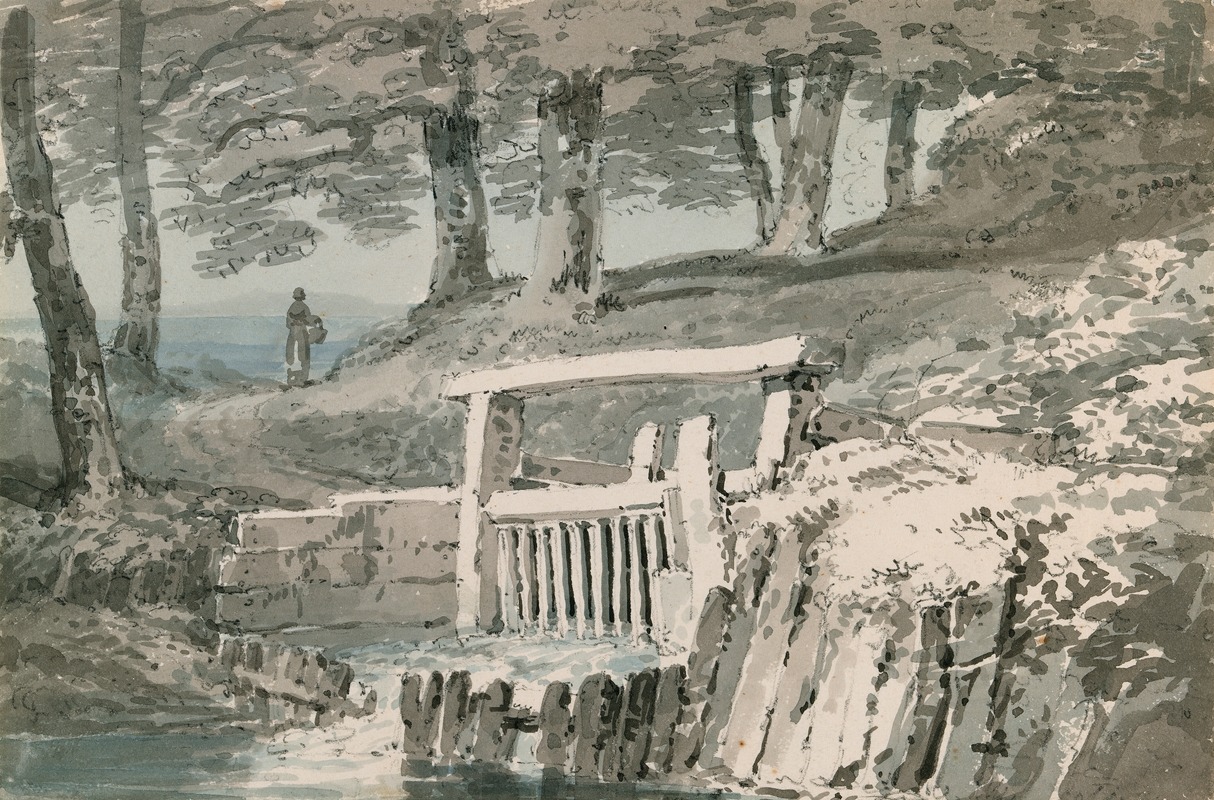
Sluice Gate, Netley Abbey, Hampshire
A hand-painted replica of Joseph Mallord William Turner’s masterpiece Sluice Gate, Netley Abbey, Hampshire, meticulously crafted by professional artists to capture the true essence of the original. Each piece is created with museum-quality canvas and rare mineral pigments, carefully painted by experienced artists with delicate brushstrokes and rich, layered colors to perfectly recreate the texture of the original artwork. Unlike machine-printed reproductions, this hand-painted version brings the painting to life, infused with the artist’s emotions and skill in every stroke. Whether for personal collection or home decoration, it instantly elevates the artistic atmosphere of any space.
"Sluice Gate, Netley Abbey, Hampshire" is a watercolor painting by the renowned British artist Joseph Mallord William Turner. Turner, born in 1775, is celebrated for his expressive colorization, imaginative landscapes, and turbulent marine paintings. He is often regarded as a precursor to the Impressionist movement due to his innovative use of light and color.
This particular work, "Sluice Gate, Netley Abbey, Hampshire," is part of Turner's extensive body of work that captures the English landscape. Netley Abbey, located near Southampton in Hampshire, England, is a 13th-century Cistercian monastery that became a popular subject for artists and tourists in the 18th and 19th centuries. The abbey's picturesque ruins and the surrounding natural beauty made it an ideal subject for Turner's exploration of light and atmosphere.
Turner visited Netley Abbey during his travels across England, where he sought inspiration from the country's diverse landscapes and historical sites. His depiction of the sluice gate at Netley Abbey showcases his ability to blend architectural elements with the surrounding environment, creating a harmonious composition that emphasizes the interplay between man-made structures and nature.
The painting is executed in watercolor, a medium Turner mastered and used extensively throughout his career. Watercolor allowed Turner to experiment with translucency and layering, capturing the ephemeral qualities of light and weather. In "Sluice Gate, Netley Abbey, Hampshire," Turner employs a delicate palette to render the scene, using washes of color to convey the texture of the stone and the fluidity of water.
Turner's work often reflects his fascination with the effects of light and atmosphere, and this painting is no exception. The sluice gate, a functional structure used to control water flow, is depicted with a sense of tranquility and timelessness. The surrounding foliage and water are rendered with a softness that suggests a gentle breeze and the quietude of the abbey grounds.
"Sluice Gate, Netley Abbey, Hampshire" is a testament to Turner's skill in capturing the essence of a place. His ability to infuse a scene with mood and emotion is evident in the way he portrays the interaction between light and shadow, as well as the subtle gradations of color that define the landscape.
This painting is part of Turner's broader exploration of Britain's architectural heritage and natural beauty. His works from this period often reflect a romanticized view of the past, highlighting the grandeur and decay of historical sites. Turner's interest in such subjects was shared by many of his contemporaries, who were drawn to the picturesque and the sublime in art and nature.
Today, Turner's paintings, including "Sluice Gate, Netley Abbey, Hampshire," are celebrated for their innovative approach to landscape art. His influence extends beyond his lifetime, impacting generations of artists who followed. Turner's ability to convey the transient effects of light and weather continues to resonate with audiences, securing his place as one of the most important figures in the history of Western art.





